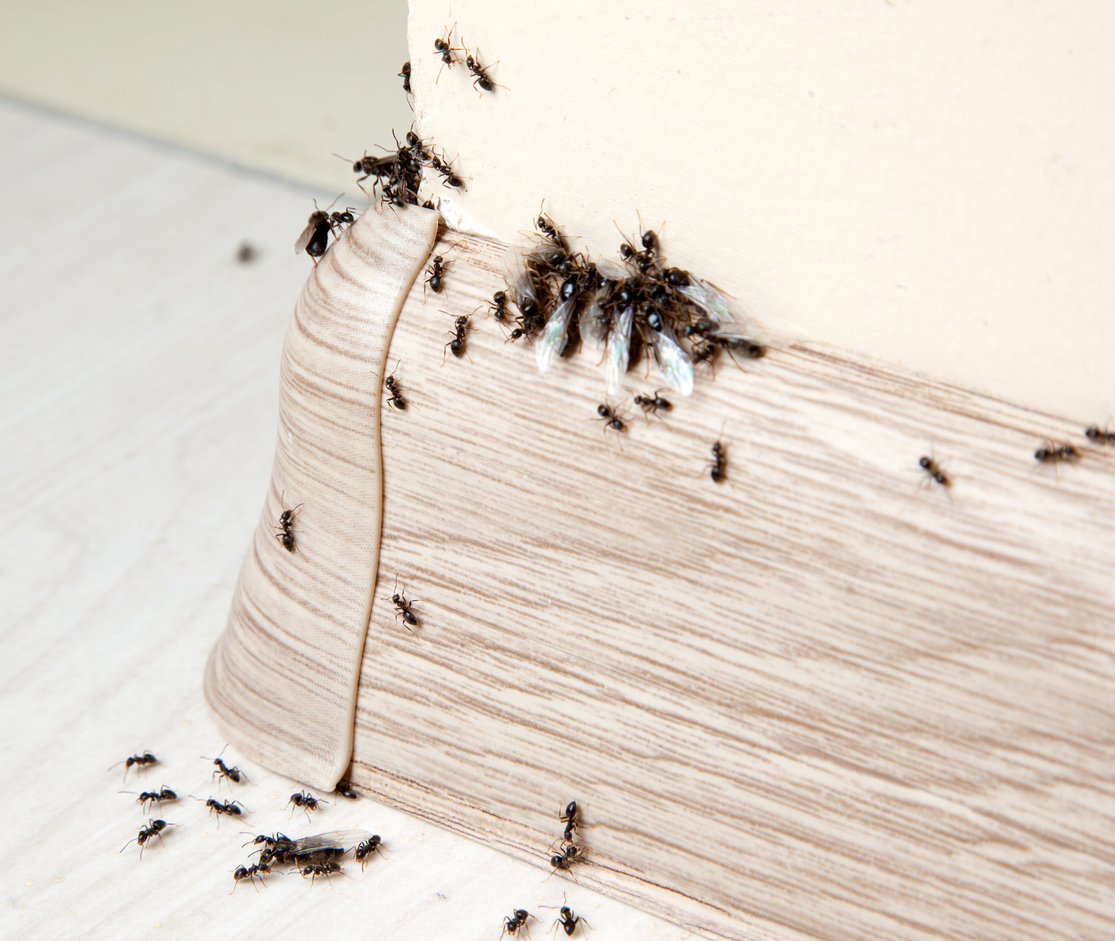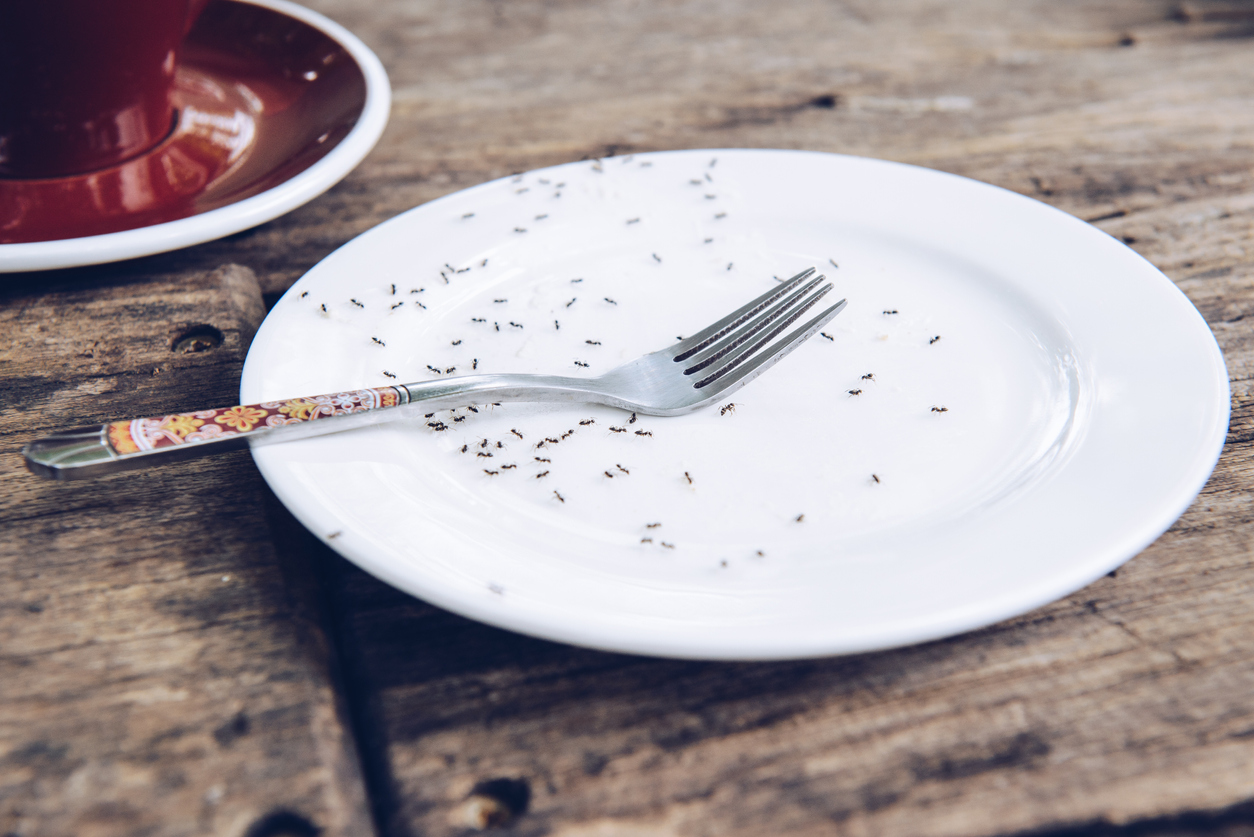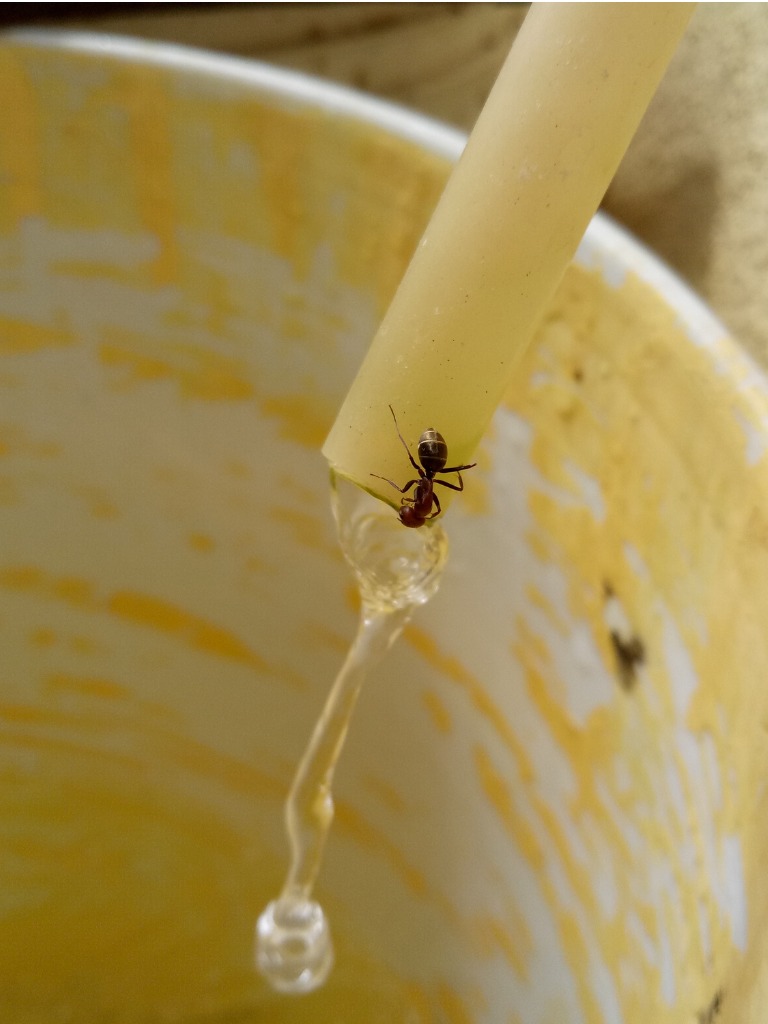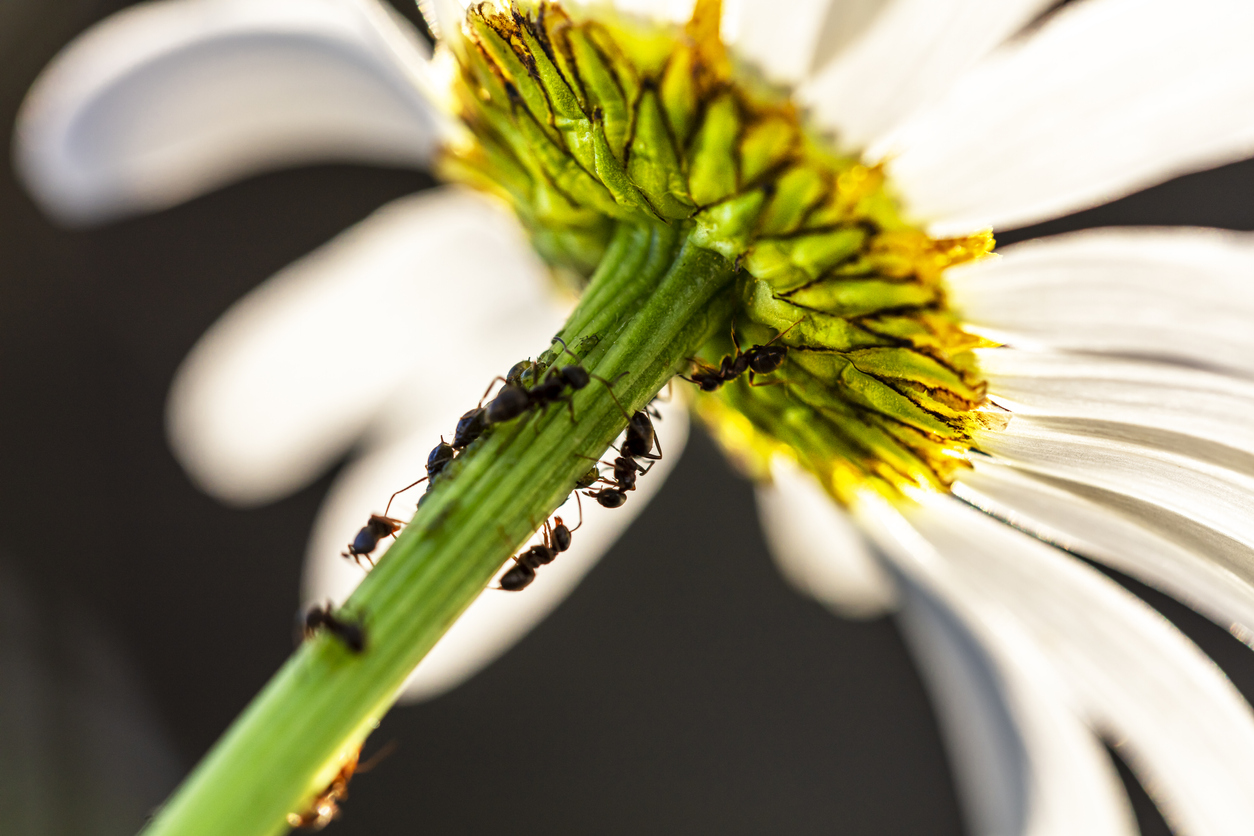

We may earn revenue from the products available on this page and participate in affiliate programs. Learn More ›
Q: It seems like I’m always battling infestations of ants, especially in my kitchen, bathroom, and garden. What attracts ants into my home, and how can I keep them out?
A: Ugh. You head into the kitchen to start your morning coffee, only to discover a highway of ants running directly into the trash can underneath your sink. While these social insects can be interesting, you probably don’t want to observe them up close and personal at home.
Dealing with ants starts with the current infestation. Immediately remove the trashcan or other ant-covered object from your home and dump the contents into a covered outdoor waste receptacle.
Next, eliminate the creepy-crawlers—including those that linger inside your home, those remaining in the trashcan, and also those now temporarily confined to the outdoor waste receptacle. If you prefer to avoid using a pesticide, mix up a 3:1 mixture of white vinegar and water in a spray bottle, and thoroughly soak all visible ants. Follow any ant trails to the entry point, which should also be sprayed. Vinegar both kills ants on contact and removes the scent trail that attracts further creepy-crawlers.
Keep reading to find out what attracts ants to your home and garden, and how to keep them out.
RELATED: Solved! This is How to Get Rid of Ants in the Kitchen Once and for All
How do ants get into your home?
Before they can raid your trashcan, ants first need to gain access to your home. Unfortunately, that’s not difficult. Ants are very small, resourceful, and numerous. Often, they are coming right through the door or window, and any small gap or crack is enough to let the pesky crawlers inside. But ants also can enter a home through a crack in the foundation, by traveling along pipes, wires, or through vents, via a crack in a wall, or even up through the subflooring beneath carpet, wood, or tiled floors.
While it’s tough to eliminate every possible entry point, it helps to be diligent about weather-sealing doors and windows and repairing cracks and gaps in walls and floors. Examining potted plants, dishes, and utensils used for outdoor dining, and yard toys before bringing them inside the house also helps. To be safe, rinse anything that’s been lingering in the outdoors before bringing it inside.

Ants need to eat, too.
Most often, what attracts ants to your home is a potential source of food. Ants have a keen sense of smell, which enables them to track down a variety of favorite foods. And just as you might have a “sweet tooth” that loves to nibble on sugary treats, most species of ants also crave sugar.
The most common food sources that draw ants inside your home are the sweetest: spilled drops of soft drinks or fruit juices, candy, jellies and jams, cookies and other sweet baked goods, honey and syrup, and over-ripe fruit are some of their favorites. A zealous group of ants will even carry off a wad of chewed gum.
But it’s not only sugar that attracts ants. Most species also crave protein and fats. That’s why it’s common to find ants swarming on greasy cooking spills, bits of meat or eggs, pet food, and even nuts, cheese, and butter. Plus, most species of ants are entirely willing to devour other insects, whether dead or alive. And although not as common as sweets and fats, grains like bread are attractants for some ant species.
Cleaning up spills immediately, taking out the trash regularly, rinsing dirty dishes before piling them into the sink or dishwasher, cleaning pet food bowls, and making sure food storage containers are tightly sealed all help reduce the chances of an ant infestation.
RELATED: How to Get Rid of Flying Ants
Ants look for sources of water.

You’re not the only one who gets thirsty; ants also require a steady supply of moisture. Not only do ants drink water at the source, they also carry it back to their colonies where it’s stored for later use. That’s why you’ll sometimes find ants in unexpected spots, such as coming up the bathtub drain, inside your dishwasher, crawling on wet wood, or setting up a colony in an overly damp basement or garage. This is especially common during stretches of dry weather, when it becomes more difficult for ants to find moisture outdoors.
You can reduce the risk of ant infestations by removing potential sources of water. That means repairing leaks quickly, letting the bathroom air out after a shower or bath, running a dehumidifier in the basement if necessary, and taking care not to leave wet towels or damp clothing sitting for too long.
Another common spot you’ll find ants seeking water is in potted plants, whether indoors or outside. Get rid of an infestation in your pots by treating the soil with an insecticide, laying an ant bait atop the soil, or covering the entire surface of the soil with diatomaceous earth, which is deadly to ants and many other insects, yet harmless to pets, people, and pollinators who merely touch the flowers and not the soil.
Ants need a cozy spot to set up a colony.
Ant colonies are complex societies, with a busy population and a strict hierarchy of queen, sterile female worker ants, and male ants who usually die shortly after mating with the queen. This society needs a home, and sometimes, especially when conditions outdoors are very dry, they will set that home up inside your own.
As a general rule, ants prefer a home that’s close to food and water sources, fairly warm, and somewhat dark. Some spots that fill all those requirements are inside the walls of your house, underneath the floor, inside the attic, or in the garage. Occasionally, you’ll find ants making a cozy home inside the outdoor portion of your air-conditioning system (the condenser).
Ants inside the walls can cause a lot of damage, as they are known to chew through electrical wires, wood, and insulation, potentially leading to electrical shorts and considerable destruction. If your infestation goes beyond ants merely looking for a quick meal and a drink, and instead has them actually nesting inside your home, it’s best to call in a professional to handle the problem. You can reduce the chance of this nuisance occurring by sealing cracks and gaps around your home, removing and replacing rotted wood and trim as soon as possible, and eliminating visiting ants promptly.
RELATED: Solved! This is How to Get Rid of Ants in the Kitchen Once and for All

Ants like flowers.
Ants are an essential part of the ecosystem, and as long as they remain outdoors, they are usually not a problem. But sometimes you’ll find ants infesting your outdoor plants, and that can be a sign of trouble. What attracts ants to your garden? Along with moisture, two other common reasons are aphids and nectar.
Many species of ants have a mutually beneficial arrangement with aphids. Aphids, which are very small wingless insects that can be green, yellow, brown, or black, are one of the most common plant pests, especially in the spring. Aphids damage and can even kill plants by sucking out the sap, leaving the plant weakened and often with deformed leaves and blossoms. As they feed, aphids secrete a sweet substance called honeydew that ants can’t resist. In exchange for eating the honeydew, ants will protect the aphids from predators.
But sometimes it’s the flowers that attract ants, usually due to sweet nectar inside the blooms. Ants can serve as pollinators, just like bees, hummingbirds, and butterflies. Penstemon and peonies are some of the top flowers that attract ants, and it isn’t uncommon to see the insects crawling all over peony blossoms. However, ants most often are drawn to low-growing plants with small flowers, such as spurge.
You can discourage ants from visiting your flowers by eliminating aphids. This is fairly easily done with a commercial insecticidal soap spray. If you prefer to make a spray, mix one tablespoon of castile soap into a quart of water, and spray the affected plants every few days until the aphids are gone. Castile soap is a plant-based soap without harsh chemicals or synthetic ingredients, and will not harm most plants. However, it’s best to avoid spraying ferns, succulents, ivy, waxy-leaved plants, and new seedlings with any type of insecticidal soap, as these plants are more sensitive and might sustain leaf damage from the spray.
RELATED: Solved! This is How to Get Rid of Ants in the Kitchen Once and for All
